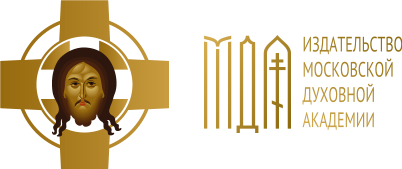The Phenomenon of Greek Religious Engraving: The Place of the Prints from the Collection of the Moscow Theological Academy Museum in the History of the Greekworld Engravings
DOI:
https://doi.org/10.31802/2658-5111-2019-1-190-212Keywords:
Greek religious engraving, The Mount Athos, The Saint Catherine’s Monastery, pilgrimage, Moscow Theological Academy Museum, charity, The history of greek religious engravings, the purpose of the engraving’s usage, The printing of engravingsAbstract
The article is devoted to the phenomenon of Greek religious engravings. There are an easel engraving with images of saints and views of monasteries, which distributed among pilgrims to promote Christian monasteries of the Orthodox Church of the East. When and why were they become used? A lot of Orthodox monasteries became poor after occupation by Ottoman Empire. Moreover, The Mount Athos had not been known in Europe until sixteenth century. The monks of the Saint Catherine’s Monastery found that the views of the Monastery mast be interesting for pilgrims and contributed to fame of their monastery. First woodcuts printed in a large number in Leo police in the middle of the 17th century. It was a great success. The monks exchanged this engraving on charity. And the Athos’s monks followed the example of Sinai’s monks. The first engravings for The Mount Athos were printed in Europe, in such cities as Vienna, and Venice. From the end of the 18th century metal plates engraved on the Mount Athos and in the 19th century the printing of engravings was amazingly extended. The most part of engravings from the collection of Moscow Theological Academy Museum printed in the middle of the 19th century in The Mount Athos. Also, this collection has some unique prints, such as the Burning Bush. This article shows the importance of the Greek engravings for the orthodox world such the instrument for advertising the most holy places for pilgrims. This etching made a great influence on our imagination nowadays about this holly places.
Downloads
References
Атанасов П. Началото на бълг. Книгопечатание. София, 1959.
Афон / Афон после падения Византии / Православная энциклопедия. Т. 4.
С. 118.
Давидов Д. Светогорска графика: Београд, 2004.
Давидов Д. Хиландарска графика: Београд: Просвета, 1990.
Зеленина Я. Э. «Достойно Есть» икона Божией Матери // Православная Энциклопедия. 2007. Т. 16. С. 100–103.
Кръстанов Т. Завещанието на Христофор Жефарович // IX Българо-гръцка конф.: Културни и литературни отношения от сред. на XVIII до средата на XIX в. София, 1984. С. 133–140.
Куйкина Е. «Проскинитарий Святой Горы Афон» Иоанна Комнина Моливда в славянском переводе иеродиакона Дамаскина (1701 г.). [Электронный ресурс]. URL: http://oaji.net/articles/2017/4586-1487600951.pdf (дата обращения 29.05.2018). Курилов А. А. Вуковичи // Православная энциклопедия. 2005. Т. 10. C. 21–23.
Микић О., Давидов Д., Стоjановић Д. Дело Христофора Жефаровића. Нови Сад, 1961.
Петрушина О. Е. Греция // Православная энциклопедия. Т. 12. 2006. С. 371.
Полывянный Д. И., Турилов А. А., Хромов О. Р. Жефарович // Православная энциклопедия. Т. 19. 2008. С. 157–158.
Попов Г. B. Древнейший русский лицевой проскинитарий // Иерусалим в русской культуре. М., 1994. С. 86–99.
Попов Г. В. Предисловие // Гравюры Греческого мира в московских собраниях.
М., 1997. С. 6.
Хромов О. Р. Корнеева Н. И. Гравюра Греческого мира в московских собраниях // Гравюры Греческого мира в московских собраниях. М., 1997. С. 9–11.
Чеснокова Н. П. Синайский архимандрит Кирилл (Старый) и его знакомые в Москве // Каптеревские чтения. № 11. [б. м.] 2013. С. 169.
Этингоф О. Е., Беляев Л. А. Ампула // Православная энциклопедия. Т. 2. 2001.
С. 188.
Ηλιου Φιλιππος. Αγιογράφοι, ζογράφοι, χαράκτες και σταμπαδόροι.῾Η μαρτυρία τῶν καταλόγων συνδρομητῶν. Μεταβυζαντινά Χαρακτικά πρακτικά επιστημονικήσ ημερίδασ. Θεσσαλονίκη, 1995. Σ. 41–58.
Ιουστίνος Σιμονωπετρίτης. Αγιορείτες Χαλκογράφοι. Μεταβυζαντινά Χαρακτικά
πρακτικά επιστημονικήσ ημερίδασ. Θεσσαλονίκη, 1995. Σ. 59–72.
Davidov D. Copperplateen Gravings of Hristofor Zefarovic for Greek Clients. Μεταβυζαντινά Χαρακτικά πρακτικά επιστημονικήσ ημερίδασ. Θεσσαλονίκη, 1995. Σ. 21.
Della Dora V. Turning Holy Mountains into Ladders to Heaven: Overlapping Topographies and Poetics of Space in Poste-byzantine Sacred Engravings of Mount Sinai and Mount Athos. Approaching the Holy Mountain: Art and Liturgy at St. Catherine’s Monastery in the Sinai, edited by Gerstel, Sharon E. J.
III. Nelson, Robert S., 1947. Series II. P. 504–535.
Egger H. Grieche Druckwerke in Wien. Ikonen auf Papier. 1998. S. 13–15.
Papastratos D. Paper Icons. Greek Orthodox Religious Engravings 1665–1899.
Edited by John Leatham. Vol. 1. Athens, 1990.
Papastratos D. Paper Icons. Greek Orthodox Religious Engravings 1665–1899.
Edited by John Leatham. Vol. 2. Athens, 1990.
Tourta A. Orthodox religious engravings 18th–20th centuries. 2001. P. 8–12.
The Phenomenon of Greek Religious Engravings: The Place of Engravings from the
Downloads
Published
How to Cite
Issue
Section
Categories
License

This work is licensed under a Creative Commons Attribution-ShareAlike 4.0 International License.



